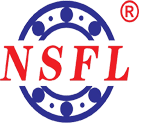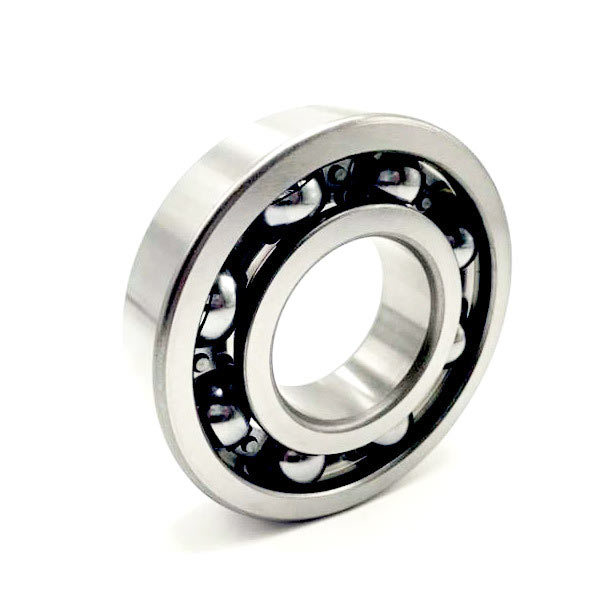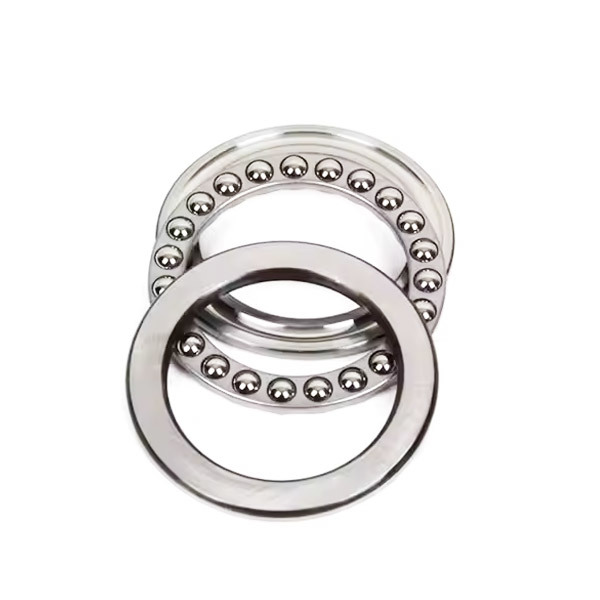25
2025
-
06
Understanding the Advantages of Thrust Roller Bearings in Industrial Applications
Understanding the Advantages of Thrust Roller Bearings in Industrial Applications Table of Contents 1. Introduction to Thrust Roller Bearings 2. What are Thrust Roller Bearings? 3. Working Principle of Thrust Roller Bearings 4. Types of Thrust Roller Bearings 5. Key Advantages of Thrust Roller Bearings 6. Common Industrial Applications 7. Maintenance Practices for Thru
Understanding the Advantages of Thrust Roller Bearings in Industrial Applications
Table of Contents
- 1. Introduction to Thrust Roller Bearings
- 2. What are Thrust Roller Bearings?
- 3. Working Principle of Thrust Roller Bearings
- 4. Types of Thrust Roller Bearings
- 5. Key Advantages of Thrust Roller Bearings
- 6. Common Industrial Applications
- 7. Maintenance Practices for Thrust Roller Bearings
- 8. Conclusion
- 9. Frequently Asked Questions
1. Introduction to Thrust Roller Bearings
In the realm of industrial machinery, mechanical components continuously evolve to meet demanding operational requirements. Among these components, thrust roller bearings play a pivotal role. Understanding these bearings is crucial for enhancing the reliability and efficiency of machinery across various sectors.
2. What are Thrust Roller Bearings?
Thrust roller bearings are a specialized type of bearing designed to accommodate axial loads. Unlike standard ball bearings, which can handle both radial and axial loads, thrust roller bearings primarily focus on supporting loads that act parallel to the shaft. They are characterized by cylindrical rollers positioned between the inner and outer rings, allowing for minimal friction and enhanced load distribution.
2.1 Components of Thrust Roller Bearings
Thrust roller bearings consist of several key components:
- **Inner Ring**: The inner ring is mounted on the shaft and rotates with it.
- **Outer Ring**: The outer ring is stationary and provides a surface for the rollers to bear against.
- **Rollers**: These cylindrical elements are responsible for load distribution and reducing friction.
- **Cage**: The cage separates the rollers, ensuring even spacing and preventing contact during rotation.
3. Working Principle of Thrust Roller Bearings
Thrust roller bearings operate on the principle of rolling contact. When an axial load is applied, the rollers rotate between the inner and outer rings. This rolling motion minimizes friction, allowing the bearings to handle substantial loads while maintaining efficiency. The design of thrust roller bearings ensures that the load is evenly distributed across the contact surface, which enhances their operational lifespan.
4. Types of Thrust Roller Bearings
Several types of thrust roller bearings are available, each tailored to specific applications and load requirements:
4.1 Cylindrical Thrust Roller Bearings
These bearings feature cylindrical rollers and are ideal for high axial loads. They are commonly used in applications requiring durability and robustness.
4.2 Spherical Thrust Roller Bearings
Spherical thrust roller bearings have curved rollers that allow for misalignment between the shaft and housing. This feature makes them suitable for applications where shaft misalignment is a concern.
4.3 Tapered Thrust Roller Bearings
Tapered thrust roller bearings are designed to accommodate both axial and limited radial loads. Their conical shape allows them to handle varying loads efficiently, making them versatile for several applications.
5. Key Advantages of Thrust Roller Bearings
Thrust roller bearings offer numerous advantages that make them an attractive choice for industrial applications. Let's explore these benefits in detail.
5.1 Enhanced Load Capacity
One of the standout features of thrust roller bearings is their ability to support high axial loads. This characteristic is crucial in applications such as gearboxes and heavy machinery, where load-bearing capacity is paramount.
5.2 Improved Durability and Longevity
The design and materials used in thrust roller bearings contribute to their durability. With proper maintenance, these bearings can operate for extended periods, reducing the frequency of replacements and associated costs.
5.3 Reduced Friction and Heat Generation
Thrust roller bearings' rolling motion leads to significantly reduced friction compared to sliding contact bearings. This reduction in friction minimizes heat generation, which is essential for maintaining operational efficiency and extending the life of surrounding components.
5.4 Versatility in Applications
Thrust roller bearings can be utilized across various industries, including automotive, aerospace, and machinery manufacturing. Their adaptability allows for seamless integration into diverse applications, enhancing overall performance.
5.5 Resistance to Misalignment
Certain types of thrust roller bearings, such as spherical roller bearings, can accommodate misalignment. This feature makes them ideal for conditions where shaft alignment may be an issue, reducing the risk of premature wear and failure.
6. Common Industrial Applications
Thrust roller bearings find application in numerous industrial sectors due to their unique characteristics. Here's a look at some common applications:
6.1 Automotive Industry
In vehicles, thrust roller bearings are used in transmissions and differentials, where they support axial loads and ensure smooth operation.
6.2 Wind Turbines
Wind turbines utilize thrust roller bearings to manage axial loads from the rotor and support structures, contributing to efficient energy generation.
6.3 Construction Machinery
Heavy construction equipment relies on thrust roller bearings to support high axial loads, ensuring reliable operation in demanding environments.
6.4 Marine Applications
In marine vessels, thrust roller bearings are essential for propulsion systems, helping to manage the forces generated by the engine and propeller.
7. Maintenance Practices for Thrust Roller Bearings
Proper maintenance is critical to the longevity and performance of thrust roller bearings. Here are key practices to consider:
7.1 Regular Inspection
Conduct routine inspections of thrust roller bearings to identify signs of wear, corrosion, or misalignment. Early detection can prevent costly failures.
7.2 Lubrication
Ensure that bearings are adequately lubricated according to manufacturer specifications. Proper lubrication minimizes friction and prolongs service life.
7.3 Temperature Monitoring
Monitor the operating temperature of thrust roller bearings. Excessive heat can indicate insufficient lubrication or other issues that require immediate attention.
7.4 Replacement of Damaged Components
Replace any damaged or worn components promptly to maintain operational efficiency and prevent further complications.
8. Conclusion
Thrust roller bearings are indispensable components in many industrial applications, offering unparalleled advantages in load capacity, durability, and efficiency. By understanding how these bearings operate and their benefits, businesses can make informed decisions that enhance productivity and reliability. Whether in automotive, aerospace, or heavy machinery, thrust roller bearings play a critical role in ensuring that systems run smoothly and efficiently.
9. Frequently Asked Questions
9.1 What is the main purpose of thrust roller bearings?
Thrust roller bearings are primarily designed to support axial loads in machinery, ensuring smooth rotation and minimizing friction.
9.2 How often should thrust roller bearings be lubricated?
The lubrication frequency depends on the operating conditions and manufacturer recommendations, but regular inspections should guide the lubrication schedule.
9.3 Can thrust roller bearings handle radial loads?
While thrust roller bearings primarily support axial loads, some designs, such as tapered thrust roller bearings, can accommodate limited radial loads.
9.4 What are the signs of worn thrust roller bearings?
Common signs include unusual noises, excessive heat, misalignment, and decreased performance. Regular inspections can help identify these issues early.
9.5 Are thrust roller bearings suitable for high-speed applications?
Yes, thrust roller bearings are suitable for high-speed applications, particularly when designed to minimize friction and heat generation.
By leveraging the comprehensive insights provided in this article, businesses can capitalize on the benefits of thrust roller bearings, ultimately leading to improved performance and efficiency in their operations.
10% DISCOUNT FOR NEW CUSTOMERS

WhatsApp:+8613211157555
Tel: +8613211157555
Address:Room 1106, 11th Floor, No. 23, Fengshan West Road, Jinbang Community, Daliang Street, Shunde District, Foshan City, Guangdong Province
Copyright 2025 Schaeffler (Guangdong) Transmission Technology Co., Ltd. SEO Business license




